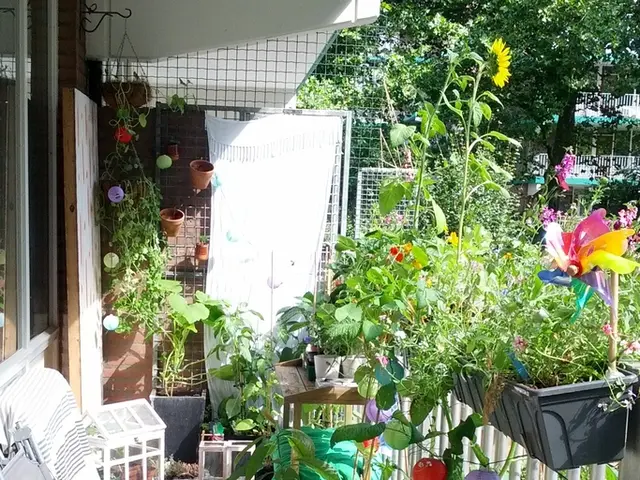Monastery restorations at St. Matthias Cloister concluded successfully. - Completely Overhauled: The Saint Matthias Cloister Now Shines in All Its Renovated Glory
Fully Restored Cloister of St. Matthias Monastery Shines in Trier
After years of extensive renovation, the cloister of the Benedictine Abbey of St. Matthias in Trier now boasts a new radiance. Abbot Ignatius Maaß led a tour through the renovated covered vaulted arcades, expressing his enthusiasm for the transformation.
Fifteen years ago, the cloister was in dismal condition, with crumbling floors, poor plaster, and a dilapidated north wing. At first, the plan was to simply beautify the space, but it soon became clear that comprehensive restoration was necessary.
The west, south, and east wings have been meticulously renovated, and the north wing has just undergone a complete redesign. The result is an elegant and bright structure, with a new lightweight steel roof and wooden elements held up by round twin pillars.
The cloister of St. Matthias holds art historical significance. Built around 1220, it is an exceptional example of the French early Gothic style on a national scale. Only three sacred buildings nationwide belong to this style, making St. Matthias' cloister a notable treasure.
The renovation was not only essential from a preservationist's perspective but was also deeply desired by the people of Trier. Over the years, they collected around 4.5 million euros for the costs, primarily through donations.
A walk through the cloister is a journey through history. The transition from Romanesque to Gothic can be clearly seen at the arches, and some areas have been left in their original state to preserve the site's history. Trier architect Karl Feils pointed out a capital where a large part of the stone is missing, speculating it might have held a beam for an installation, a feeding place, or a stable.
Over the years, the cloister served various purposes due to the monastery's secularization. In the cloister garden, there was once a large manure pile, and other areas housed potato storages, a distillery, and animal stalls. This prolonged agricultural use, while damaging the building, may have ultimately saved it. The Benedictine monks returned in 1922, and a first renovation took place in the 1950s.
St. Matthias Monastery, with its basilica, is a unique monastery in South Trier. Its origins date back to the third and fourth centuries, and the crypt houses the grave of the apostle Matthias, making it the only apostle's grave north of the Alps. Abbot Maaß, originally from Elm-Sprengen near Schwalbach in the Saarland, described it as a place of veneration for the apostle, rather than a question of authenticity.
The monks see the restored cloister as a sanctuary that invites reflection. Regular Cloister Sundays, guided tours, and services are planned to share this peaceful space. The completion of the renovations will be celebrated on July 13th, with a cloister festival open to everyone, including a special attendance from the Chairman of the German Bishops' Conference, Georg Bätzing.
- In an expression of gratitude towards the community's support, Abbot Ignatius Maaß plans to establish a series of events, such as Cloister Sundays and guided tours, utilizing the restored cloister as a sanctuary for reflection, thoughts resonating with the community policy of fostering a shared space for communal activities.
- Embarking on a new chapter with respect for its heritage and in harmony with the home-and-garden lifestyle preferences, the renovated cloister of St. Matthias Monastery in Trier invites residents and visitors to partake in tranquil spaces, previously occupied by potato storages, animal stalls, and a distillery, now transformed into a vibrant piece of history, showcasing the fusion of the past with present lifestyles.





